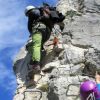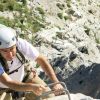Vías ferratas
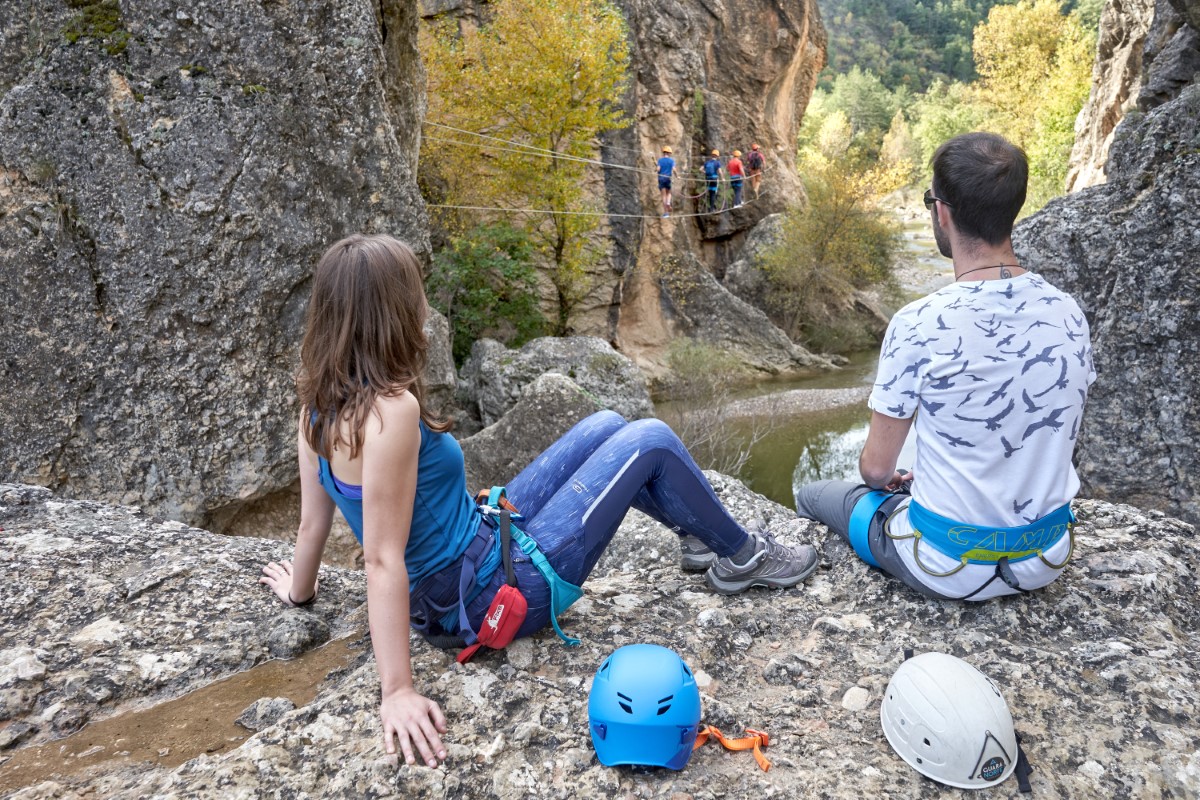
Peñas Juntas Canyon is located 2 km south of Bierge and was formed by Isuala River that carved beautiful natural pools at the foot of the walls.
To access the Via Ferrata you have to drive a few hundred meters on unpaved road until you reach a parking area. From that point you must descend to the river course by a trail.
The Via Ferrata starts with three consecutive Tibetan bridges —the longest of 25 meters— that are the main attraction of the route. At the end of the third bridge begins the staples ascent, very easy and with several rest points.
In order to climb the Via Ferrata is mandatory to use homologated safety equipment (helmet, harness, lanyard). Hiring a qualified guide is strongly recommended.
Technical information
- Length: 200 m
- Difficulty: K2
- Approach: 20 minutes
- Time of activity: 45 minutes
- Return: 20 minutes
- Equipment provided: Clamps and handrails
- Bridges, footbridges: 3
Map
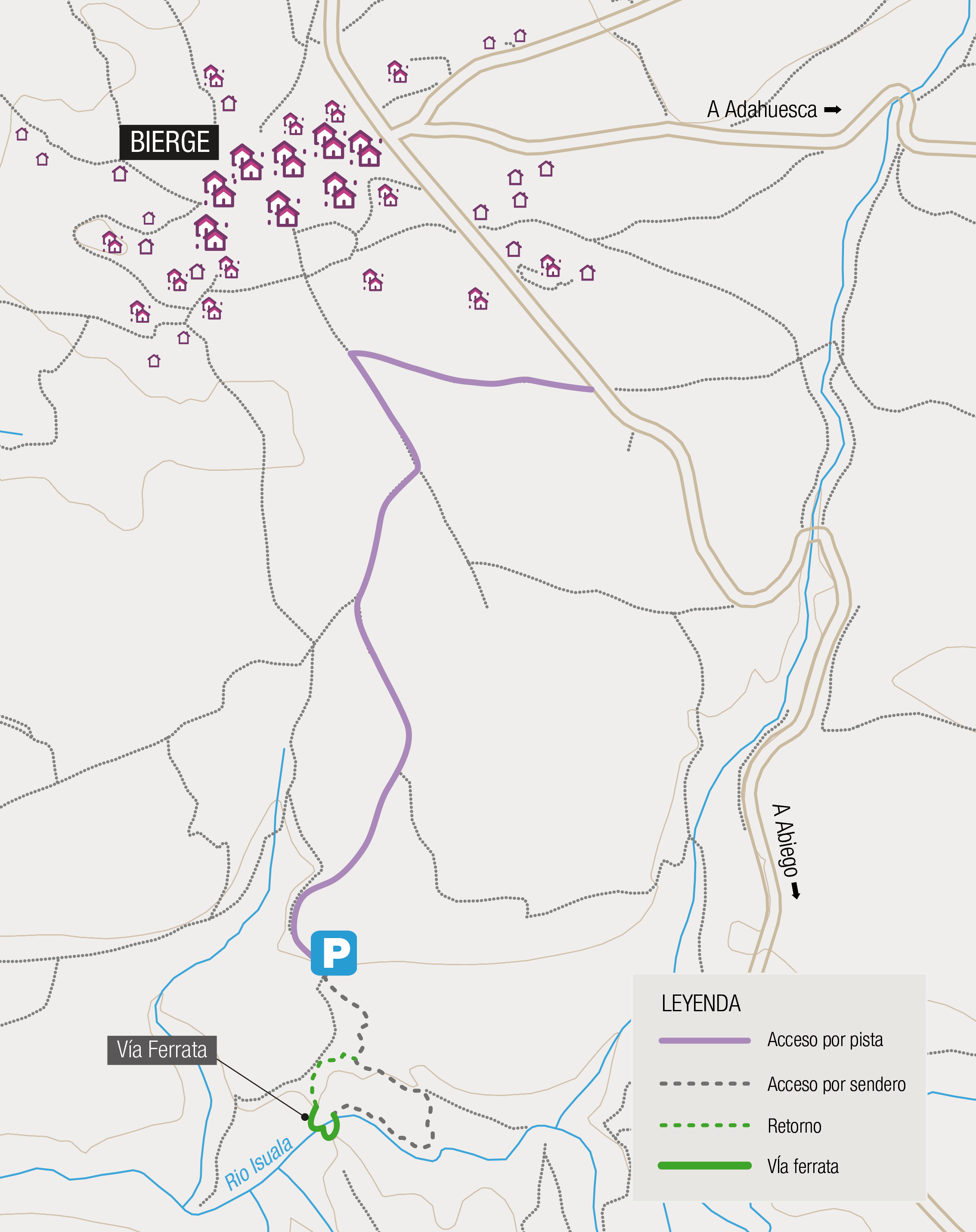
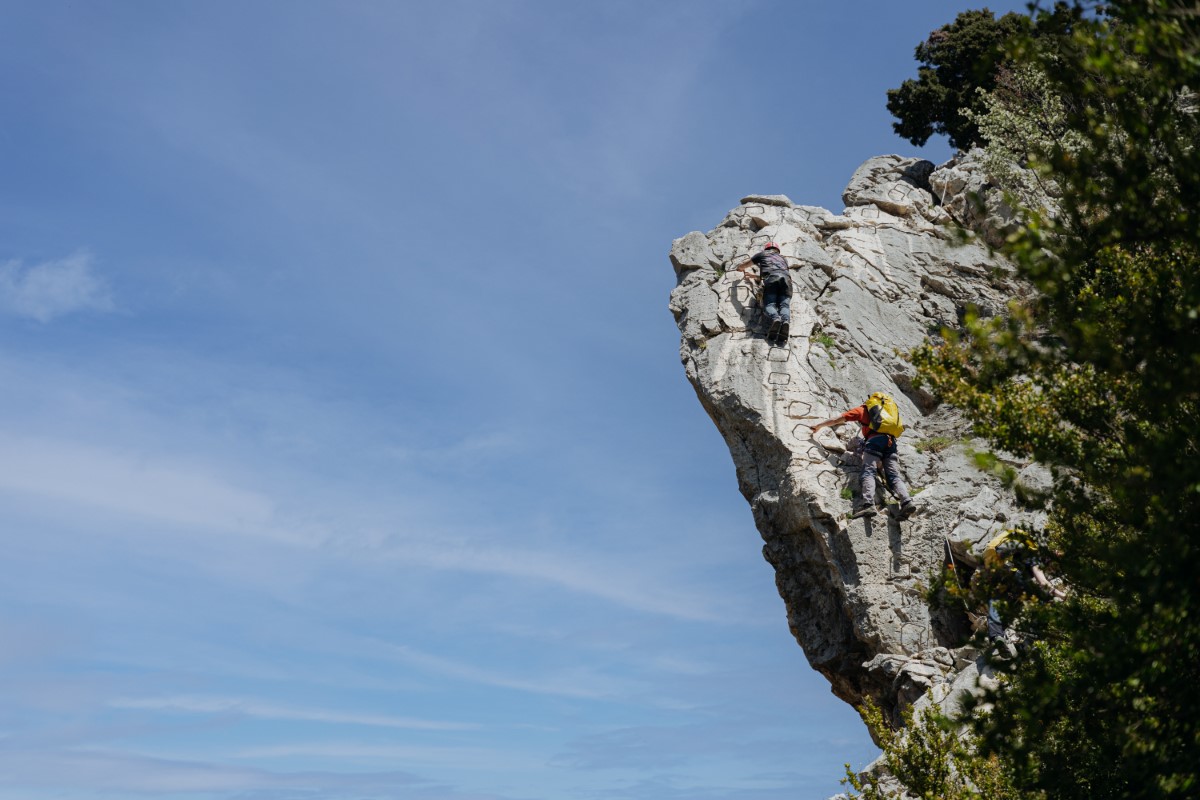
The Virgen del Castillo hermitage is located in a privileged place, at the top of Mascún River Canyon and surrounded by huge walls of limestone rock. The nice approach to the Vía Ferrata from Rodellar will let you discover the nearby climbing areas and will force you to cross the river on several occasions. This Via ferrata starts at the river course, right after «Surgencia del Mascún» —a water source— and climbs to the hermitage by a vertical rock spur. The climb is not complicated, although it has some spectacular aerial sections. The route ends at the hermitage with extraordinary views over the river canyon.
In order to climb this Vía ferrata, the use of homologated safety equipment (helmet, harness, lanyard) is mandatory. Hiring a qualified guide is strongly recommended.
Technical information
- Length: 250 m
- Difficulty: K2
- Aproach: 35 minutes
- Time of activity: 40 minutes
- Return: 35 minutes.
- Equipment provided: Clamps and handrails
Photo gallery
Map
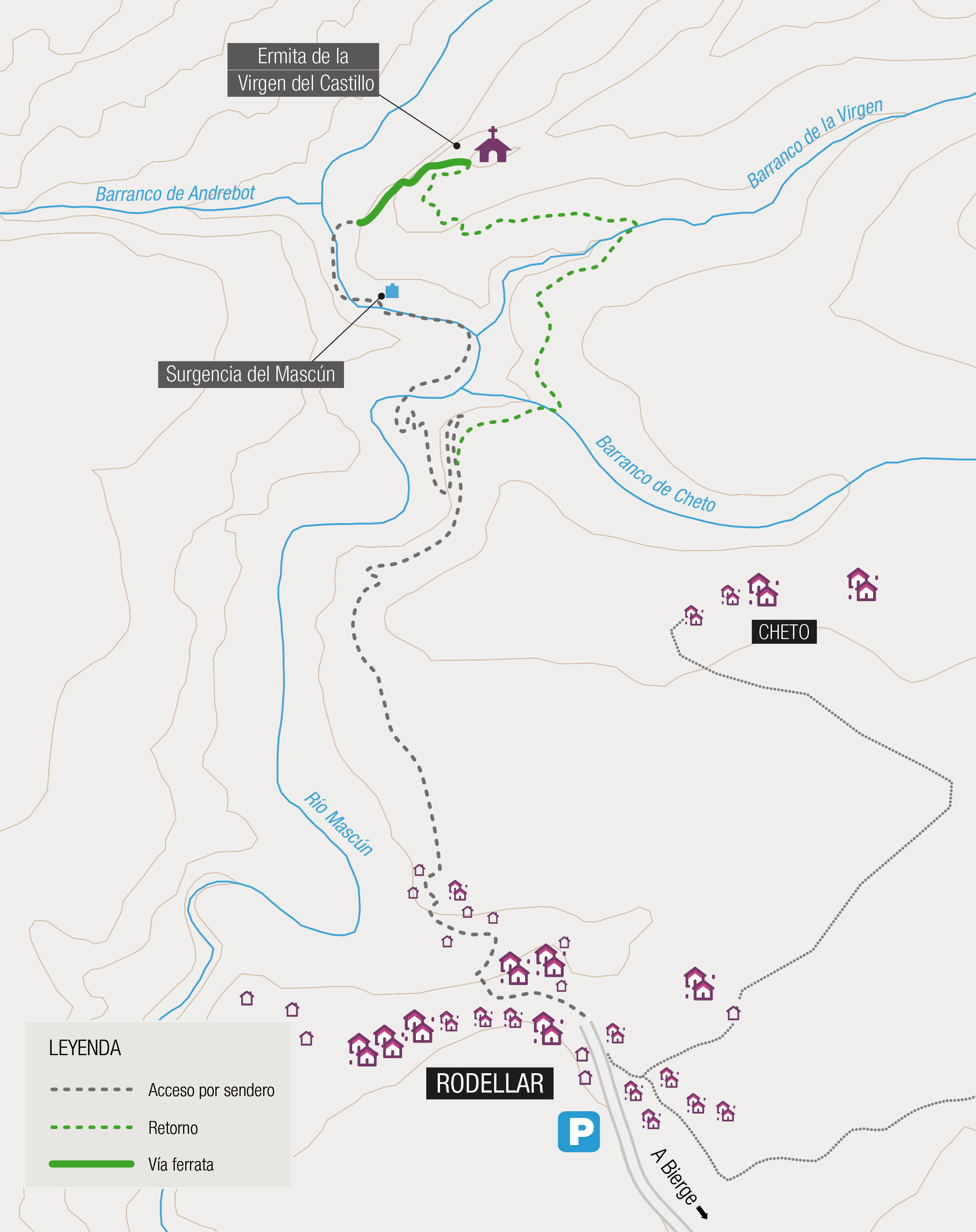
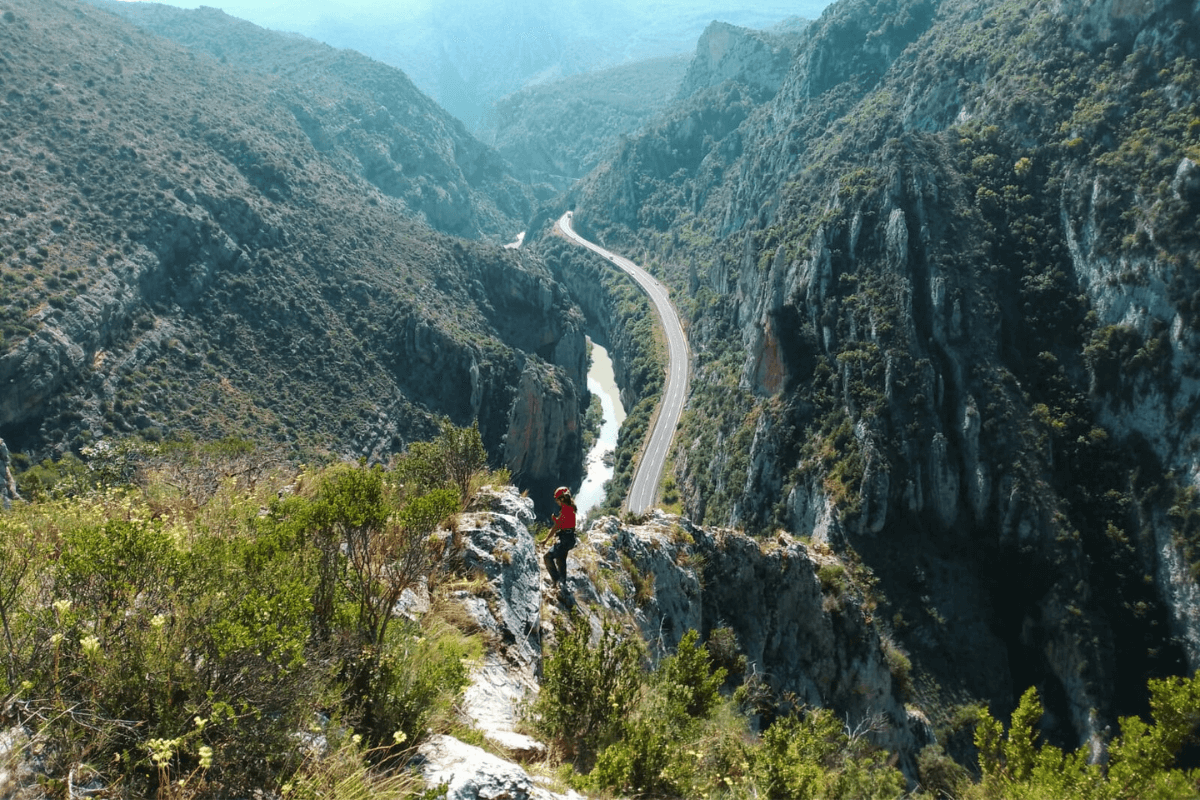
The Congosto de Olvena is a 300 m deep gorge crossed by the river Ésera. The via ferrata of Santo Cristo climbs up the walls of its right bank to the Olvena viewpoint, where you can enjoy impressive views of the gorge.
To access the via ferrata from the N-123 road, one have to cross the canyon over the impressive Sierra bridge. The first section runs between rock channels of easy level up to a monkey bridge (optional), which adds to the difficulty of the route. The channel continues with a steep slope until it reaches an intersection, where we can continue straight on to the Santo Cristo hermitage via an escape route, or cross over a tibetan bridge and do the most complex part of the ferrata, with a stretch of ridge and a slight overhang. The return is on foot, following the GR 18 signs to the starting point of the ferrata.
In order to climb the Via Ferrata is mandatory to use homologated safety equipment (helmet, harness, lanyard). Hiring a qualified guide is strongly recommended.
Technical Information
- Length: 480 m
- Difficulty: K2
- Approach: 5 minutes
- Time of activity: 90 minutes
- Retour: 20 minutes
- Equipement provided: Clamps and handrails
- Bridges, footbridges: Yes 2
Map
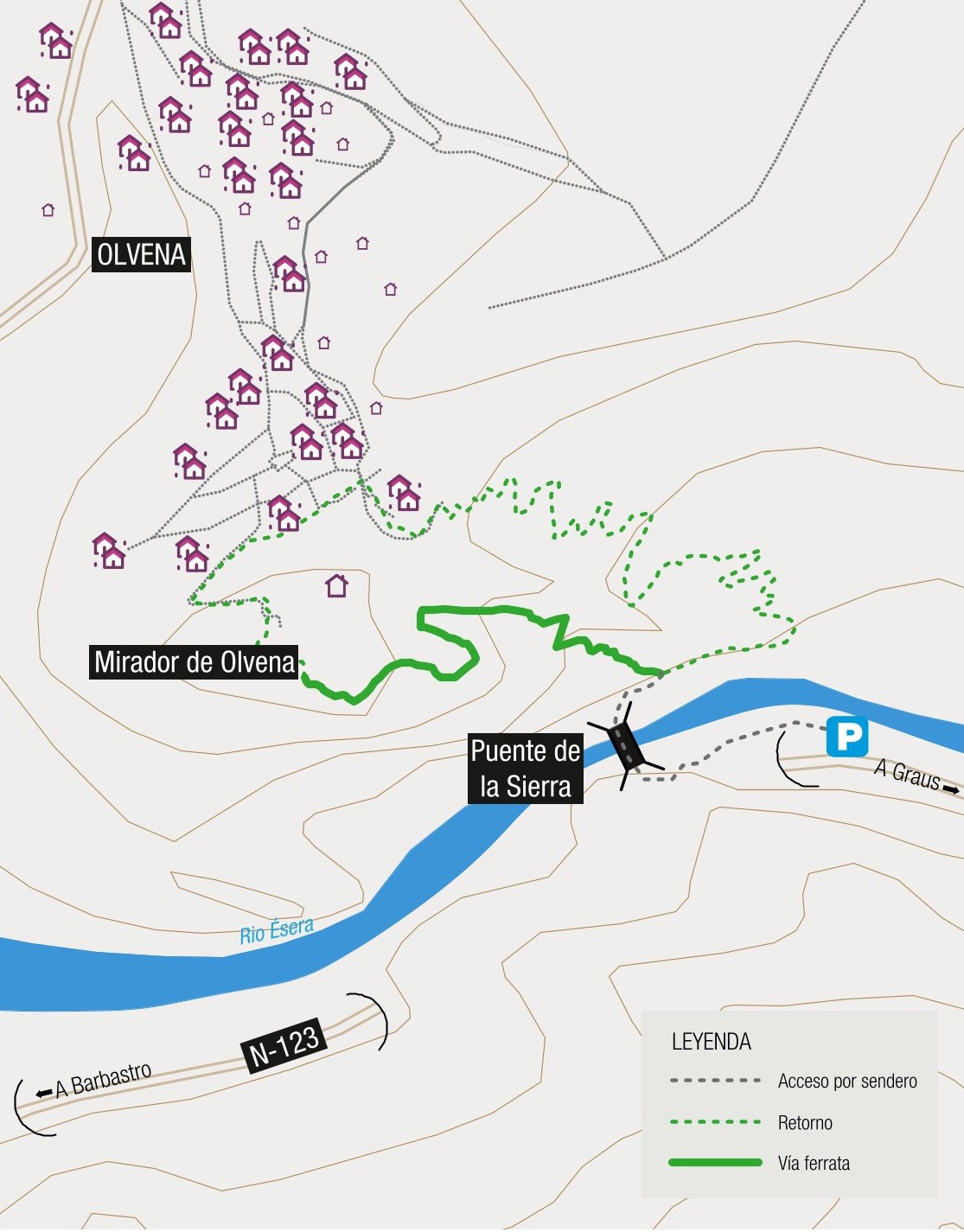
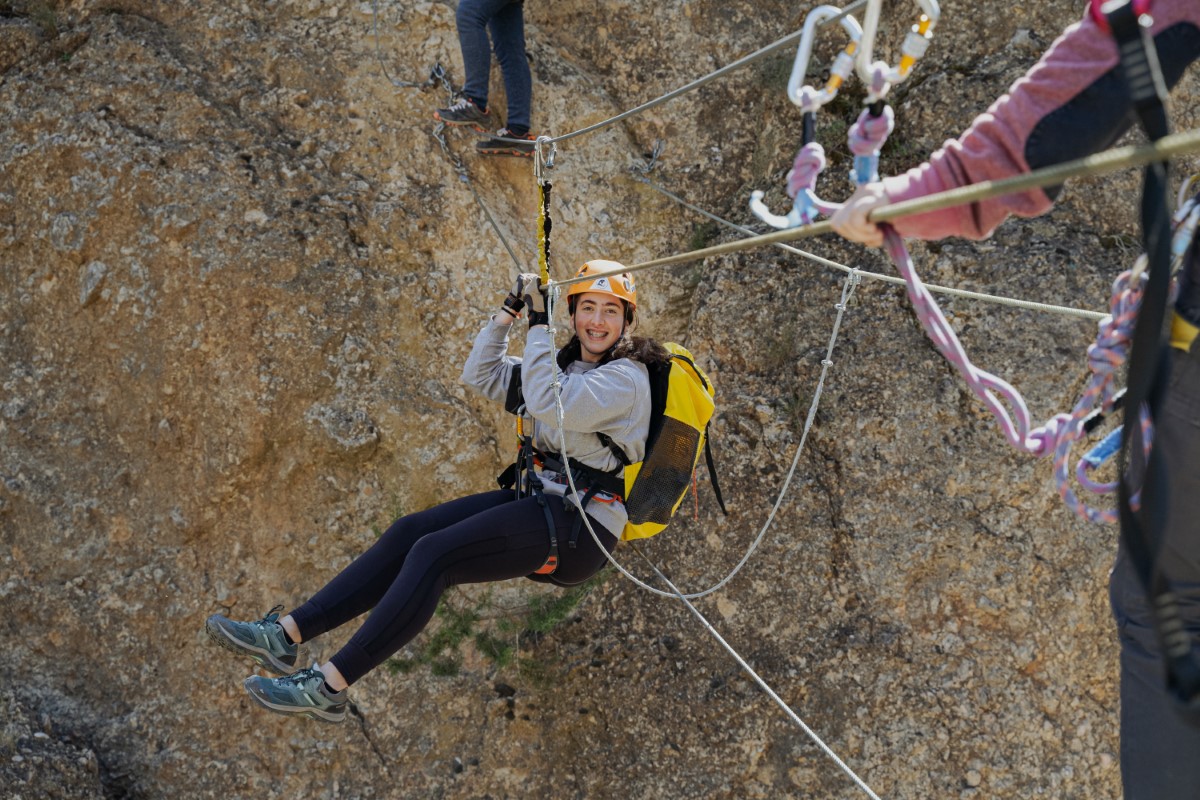
Via ferratas are aerial routes or mountain paths flanked by rock walls that are equipped with permanent grips to provide an easier ascent. Through a combination of ladders, rope bridges, anchored chocks, chains, handrails etc., together with an ever-present security cable, these innovative routes allow visitors to reach spots that would be otherwise inaccessible.
There are two via ferratas that are ideal for beginners.













